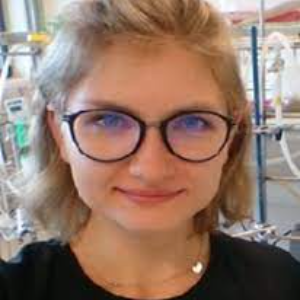Title : Catalytic reactions as a tool for modification of polysiloxanes with silsesquioxanes
Abstract:
OSS- Polyhedral Oligomeric Silsesquioxanes are a family of worldwide known organosilicon, threedimensional, nanosized compounds of the general [RSiO3/2]n formula, a topological analogues of the sphere. The most popular, not only because of their construction, but mainly because of their unique properties (solubility, non-flammability, oxidation resistance, non-toxicity) are cage silsesquioxanes, especially cubic T8 type (number eight represents the number of SiO3/2 units) that might possess from one to eight functional groups (R). The research on POSS compounds has influenced almost all branches of science which is well reflected in the enormous number of papers and patents published each year. Another important group of silsesquioxane family with increasing popularity, are double-decker silsesquioxanes that were discovered more than a decade ago. As the name suggests they consist of two cyclosiloxane rings (“decks”) with four inert phenyl groups each, stacked on top of one another and joined by Si-OSi bridges.There are two types of double-decker silsesquioxane structures- with an ‘open’ or ‘closed’ core, whit four or two functional groups respectively. The studies in the matter of DDSQ derivatives are quite new, therefore the number of papers considering their potential application is limited in comparison to POSS. PS – polysiloxanes are polymers consisting of an inorganic Si-O-Si backbone chain with organic side groups attached to the silicon atoms. Thanks to theirs unique properties (low glass transition temperature and high thermal stability, high gas permeability, hydrophobicity), they have an enormous quantity of applications in almost every branch of chemistry as well as in everyday life, i.e. in space and solar applications, optoelectronics (OLED), drug delivery systems, food industries, surface modification, cosmetics and many more. The important aspect of polysiloxanes is the possibility of their modification when they contain functional groups in the structure, e.g. H – poly(hydro)siloxanes or vinyl – poly(vinyl)siloxanes. Bearing in mind that reports on the modification of polysiloxanes and silsesquioxanes incorporation into their matrix are still limited in the literature, our aim was to contribute to this issue. The synthetic procedures that are presented in this presentation are based on transition metal (especially Pt) catalyzed processes, e.g. hydrosilylation. The decisive feature of this studies lies in the wide range of functional silsesquioxanes differing in the structure that are planned to be used for the PS modification. The crucial aspect of project presented in this presentation is to investigate the influence of the silsesquioxane frameworks incorporated into the resulting hybrid materials structures on their physical and chemical properties.


